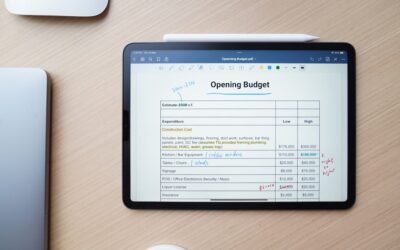Welcome to Part 2 of our blog series on machine shop estimating methods! In this installment, we’ll discuss experience-based estimating, a method that relies on the expertise and intuition of experienced professionals in the machine shop. This method is quick and easy to implement but may lack the accuracy of more data-driven approaches. Let’s dive into the details!
What is Experience-Based Estimating?
Experience-based estimating is a method that utilizes the knowledge and skills of experienced machine shop professionals to provide cost and time estimates for a job. This method is based on the intuition of these professionals, who draw on their past experiences to determine how long a job will take and how much it will cost.
How to Implement Experience-Based Estimating
To implement experience-based estimating in a machine shop, follow these steps:
- Consult experienced professionals within the shop, such as machinists, supervisors, or managers.
- Discuss the specifics of the job, including materials, processes, and any unique challenges.
- Collect estimates from the experienced professionals, who will base their estimates on past experiences with similar jobs.
Pros and Cons of Experience-based Estimating
Pros:
- Quick and easy: Experience-based estimating is fast and straightforward, making it an appealing choice for smaller machine shops or jobs with tight deadlines.
- Intuitive: This method leverages the expertise of experienced professionals, who are often well-versed in the nuances of their craft.
- Low-cost: Experience-based estimating does not require any specialized software or tools, making it an affordable option for machine shops.
Cons:
- Less accurate: Estimates based on experience may be less precise than those generated by data-driven methods, leading to potential discrepancies in cost and time.
- Limited by experience: The accuracy of this method is highly dependent on the quality and relevance of the professionals’ past experiences.
- Lack of standardization: Different professionals may provide different estimates for the same job, leading to inconsistencies and potential confusion.
Summary
In Part 2 of our blog series, we’ve explored the benefits and challenges of experience-based estimating. This method is quick and easy to implement, making it appealing for smaller machine shops or jobs with tight deadlines. However, the accuracy of these estimates may be limited by the professionals’ past experiences and can lack the precision offered by more data-driven approaches. By choosing the right estimating method for each job, machine shops can ensure they are pricing their work fairly and competitively, while maintaining profitability and sustainability over the long term.
In our next installment, Part 3, we will dive into time and materials estimating, another common method for determining costs and timelines in machine shops. This approach focuses on the direct costs of labor and materials, offering a more objective and measurable way to estimate project costs. Stay tuned for more insights on selecting the best estimating method for your machine shop’s needs!




0 Comments